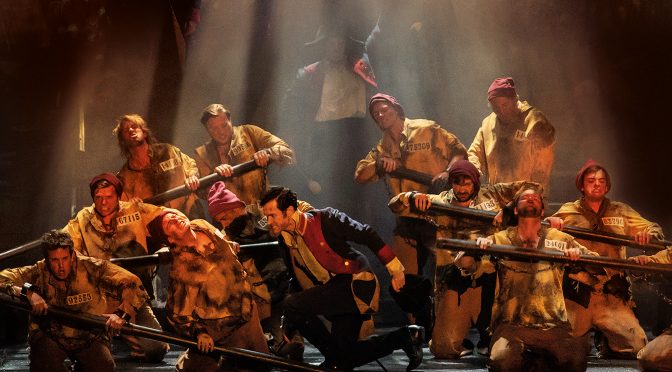Based on the phenomenally successful Oscar-winning Studio Ghibli film, London audiences now have the chance to see this stage adaptation, direct from Japan. The show has the air of an event and Fans are sure to love it.
The production looks and sounds fantastic. Jon Bausor’s constantly moving set design is superb, likewise the lighting from Jiro Katsushiba. The costumes by Sachiko Nakahara could be on display in a museum. With every aspect of design, details thrill.
There’s a big orchestra for Joe Hisaishi’s score – a soundtrack I’m sure many would listen to at home. And a lot of dance: the choreography by Shigehiro Ide (also credited with staging) is both ambitious and otherworldly. Most notable is a brilliant performance from Hikaru Yamano as ‘No-Face’. What the cast achieve, given how many of them are covered and wearing masks, is impressive.
Spirited Away is vast and technically ambitious. The puppetry (Toby Olié) runs through nearly every scene and is strong. The result is that every movement is planned (including some witty plays with the music) and John Caird’s direction has to have the utmost precision. The use of projections is, thankfully, limited; the show works as a live event – but that level of control does mean little sense of spontaneity.
Caird is also the show’s adapter and has, again, done well. This is a simple story of a young girl called Chihiro who finds herself trapped in a magical world. Events are fast paced. There is some urgency about the fate of her parents, transformed into pigs by a witch called Yubaba. But this journey is one of discovery rather than a quest: Chihiro follows instructions rather than working things out. She is a passive heroine. Ironically, the role is high energy, barely off stage and running around all the time (four performers are listed – Kanna Hashimoto, Mone Kamishiraishi, Rina Kawaei and Momoko Fukuchi – giving an idea of how demanding the role is).
While the story is entertaining, with little sense of peril, it is hard to see much drama. Likewise, the romance fails to convince and is underexplored – Chihiro’s potential boyfriend being a magical figure who can turn into a dragon doesn’t help. These may be memorable characters but they lack psychological insight. And the humour is limited.
If the style has shortcomings, they all reflect Studio Ghibli’s popular and acclaimed work. The show has wider appeal than another hit from the same source, My Neighbour Totoro. But there’s still a sense Spirited Away is primarily for kids. Clearly it crosses over – box office figures tell you that. But it is the world created, rather than what goes on it that interests.
Until 24 August 2024
Photo by Johan Persson






